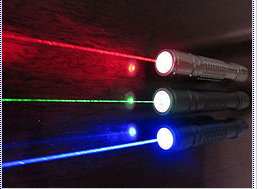Artificial lighting illustrates another principle of Compression Thinking, quality over quantity, always. Several other principles align with quality over quantity, including trying to avoid being blindsided by unintended consequences. This is the second in a series on Compression Thinking Principles.
For most of us excess lighting does not pop to mind as being a waste, a hazard, and a pollutant. However, those who study lighting realize that too much of a good thing sours because of unintended side effects.
First, excess lighting wastes energy. No one can pinpoint a number, but SWAG estimates are that lighting consumes at least 20% of all electricity generated, not counting that from vehicles and other sources that power their own lighting. A big reduction in energy used for lighting would significantly reduce overall electrical energy demand.
Technology helps. We want light where we want to look, when, and for what we want to see, but we also use it as a deterrent to unwanted behavior, and to gain attention. Timers and motion detectors help with this, although the controllers also use electricity. Replacing incandescent lighting with LED cuts energy use by as much as 80%. Old-fashioned turning the lights off still works well too, but one has to form the habit. Remembering to turn your lights off can be made easier through the use of home control systems that put all of the light switches together at the touch of a button.
Second, excess lighting is a health hazard. This is part of many other issues, like the health effects of night work. Researchers know that when light disturbs sleep, such as when sleeping in the daytime, the health effects are more than just feeling draggy. They know that production of melatonin is high when sleeping in the dark, low when in daylight, and that higher concentration of melatonin helps suppress growth of carcinomas. No smoking gun yet points to excess light and poor sleep as a cause of cancer, but circumstantial evidence is as strong as that supporting use of sunscreens to prevent UV light from giving us sunburn.
Lighting effects on sleep depend on color too. Blue light disturbs sleep more than red. Blue light hazard is a suspected cause of retinal damage. Unfortunately LED lighting is bluer than incandescent. Those of us spending hours in front of screens see a lot of blue light. Researchers suggest shutting down well before bedtime. If you must use a nightlight, make it red not blue. Even a little glow of any color in a room tends to disrupt sleep.
Third, by diminishing or destroying darkness, excess light is a pollutant that we see, but don’t recognize. A brightly lit urban sky obscures the Milky Way and most stars too. Even in rural America, a light breaks the darkness somewhere. We all experience being blinded by bright headlights, or by other bright lights, an effect that becomes worse as we age. Lighting at an intersection is known to be a factor in night accidents.
Animals are similarly affected. Deer-in-the-headlights is a hackneyed phrase, but the effects of light on nocturnal animals is much more widespread. Excess light interferes with the vision of animals equipped to navigate in darkness. This is known to confuse birds migrating at night, and many species do. No naturalist can put a number on this effect, but it is huge. They don’t know the moth or migratory bird population today versus 100 years ago, but it is “way down.” Light pollution is another way that human development encroaches on species habitat with effects hidden in plain sight.
We’ve only covered visible light. Pollution all across the light spectrum stretches into another set of hazards.
So what, you say. What do we do, knowing all this? It’s another of many factors to consider when looking at how to improve systems while using much less.

